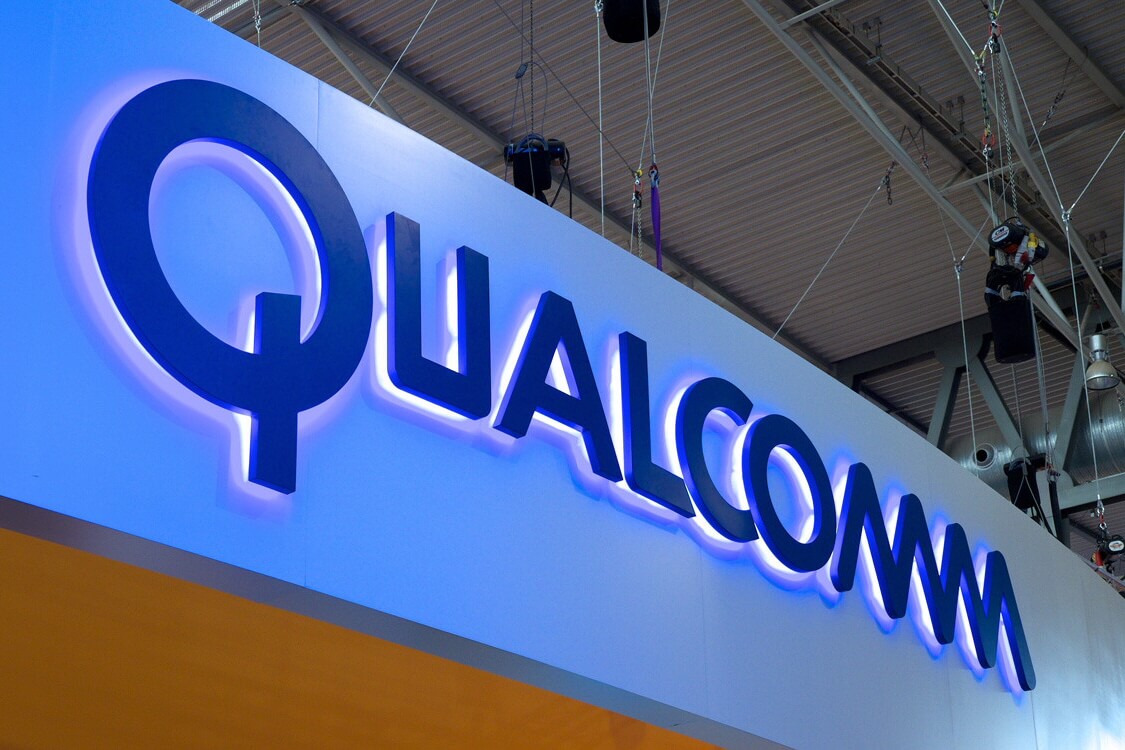
In January this year in Sydney held an event Gigabit LTE Experience, where companies Telstra, Ericsson and Netgear have demonstrated the world’s first commercial mobile device and a network that supports Gigabit LTE. Since then a lot has been done, and 2017 Qualcomm can safely be called the year of Gigabit LTE.
Today 41 operators in 24 countries, including in Russia, has deployed or is testing Gigabit LTE. Among the companies that have announced the commercial launch of LTE, Gigabit networks, includes MegaFon and MTS, and MTS and VimpelCom has tested the technology LAA, which is one of the key for the realization of Gigabit LTE using unlicensed spectrum.
Currently the world has 16 devices that support Gigabit LTE, including 10 Android smartphones of premium class with support for Gigabit LTE chipset Qualcomm Snapdragon 835 modem LTE Snapdragon X16. In our country at present already sold several premium smartphones, with support for Gigabit LTE: for example, Sony Xperia XZ Premium.
What are the advantages of Gigabit LTE? It is much faster loading speed and most efficiency of the network overall, and high spectral efficiency. This was confirmed by research among the users, which was held at the initiative of Qualcomm Technologies company Signals Research Group (SRG), who has considerable experience in the field of testing the performance of wireless networks. During testing, we compared the smartphone with support for Gigabit LTE (16th category LTE), such as the Samsung Galaxy S8 (on the Snapdragon platform 835), with the other smartphone that supports 12 LTE category (where the maximum download speed up to 600 Mbps). The latter is the LTE capabilities of some of the recent flagship smartphones running on Android.
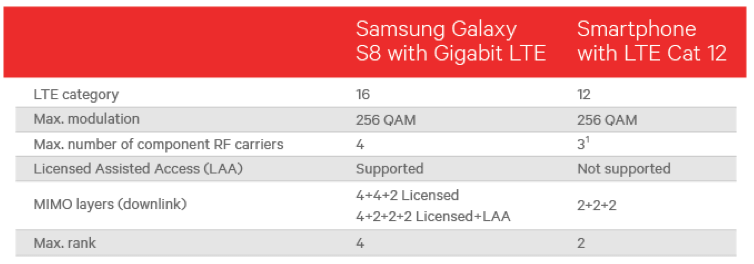
During testing, the SRG has carried out a number of test scenarios, which were mainly designed to test the experience of using the device by the consumer:
- Download from Google Play Store (download of mobile games — ~ 350 MB)
- Download from Google Drive (file download 2 GB, download 3 videos)
- Streaming on YouTube (4K 360° video)
- Video streaming (video encoding 15 Mbps)
In the following table you can see a better performance and a better user experience with the Galaxy S8, supporting Gigabit LTE, compared with 12 smartphone category in the network that support 4×4 MIMO on a single LTE carrier frequency with modulation 256-QAM to achieve maximum download speeds of 400 Mbps. that is why, despite the fact that it’s LTE network is not a Gigabit device with support for Gigabit LTE can provide higher performance than mobile 12 category:
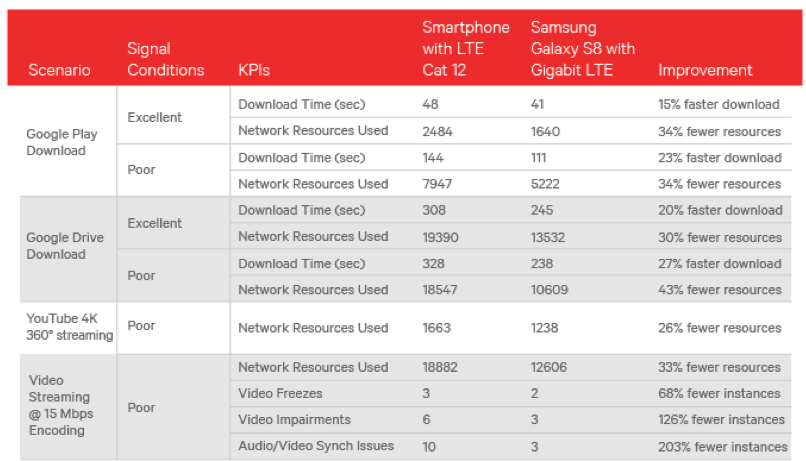
In conditions of very good signal from Samsung Galaxy S8 with support 4×4 MIMO has an additional layer of data flow in addition to existing. Thus, using the same amount of spectrum, the device is passed more data than smartphone 12. Working on the border of the cell, two additional antennas helped to maintain the connection more strong, clean signal from the tower. This technology is called “four-channel diversity reception” (4-way receive diversity). Thanks to her Galaxy S8 can accept more data streams and increase the download speed. Figure 1 shows the actual observed MIMO ranks (Rank 1 means 1 data stream, Rank 2 means 2 data stream, etc.) for both the smartphones in different radio conditions.
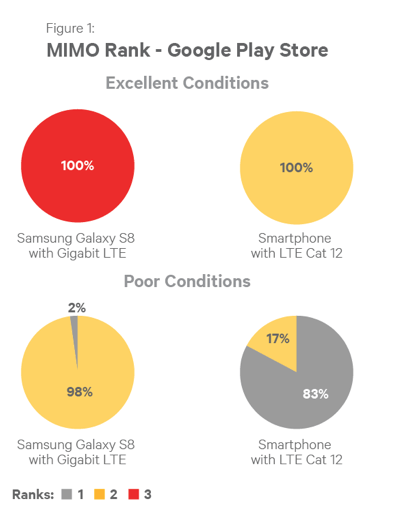
According to the test results it was concluded that users of the Samsung Galaxy S8 will get the best user experience, which means:
- Faster download
- The best video quality
- Thanks to the technology of a 4×4 MIMO Galaxy S8 uses fewer network resources, thereby increasing its overall throughput
Technology Gigabit LTE technology LAA (licensed access) and LTE Advanced Pro combine unlicensed spectrum (5 GHz) licensed spectrum through aggregation of the carrier frequencies to increase network bandwidth. More networks are deploying small cells LAA, increasing productivity for users of smartphones and increasing throughput, thereby optimizing network resources.
Download from Google Play was tested by comparing the Galaxy S8 with smartphones 12 category at the small cell using the technology of the LAA in the band of 20 MHz of licensed spectrum and unlicensed spectrum, the three carriers with 20 MHz each. Thus, in total we used 80 MHz of spectrum.

Although the average download speed in the case of the use of technology with the Galaxy LAA S8 amounted to 285 Mbps, the real benefit from LAA is different. LAA distributes the traffic between the licensed and unlicensed bands of the spectra, increasing the bandwidth on a licensed frequency, which in turn increases the data transfer speed for other users in these bands.
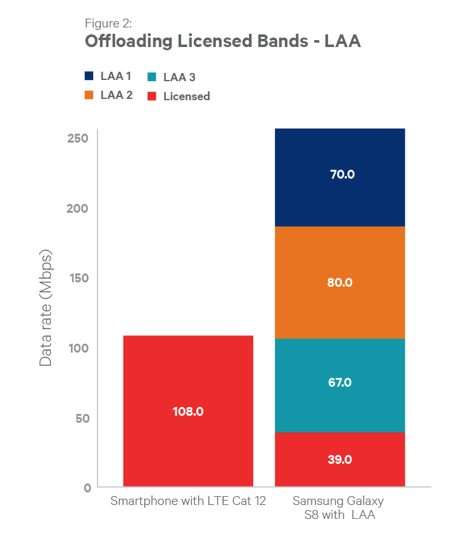
In addition, the SRG analysed the operator’s advantage in spectral efficiency in different radio conditions: good base station, the middle – in the middle of the cell, and bad — on the border of the cell. The study showed a significant advantage (of up to 50 percent) in the efficiency of use of spectrum with the Samsung Galaxy S8, supporting Gigabit-class LTE. Were provided the best user experience not only for those who use smartphones with LTE support Gigabit, but that is very important, and for all other users on the network. The figures below show the normalized bandwidth in resource blocks of the network (RB) at the physical level in different radio conditions. Data transfer rate, normalized to the resource blocks of the network (RB) is the estimated data transfer speed in the case when mobile devices were used all available network resources (RB) in the network:
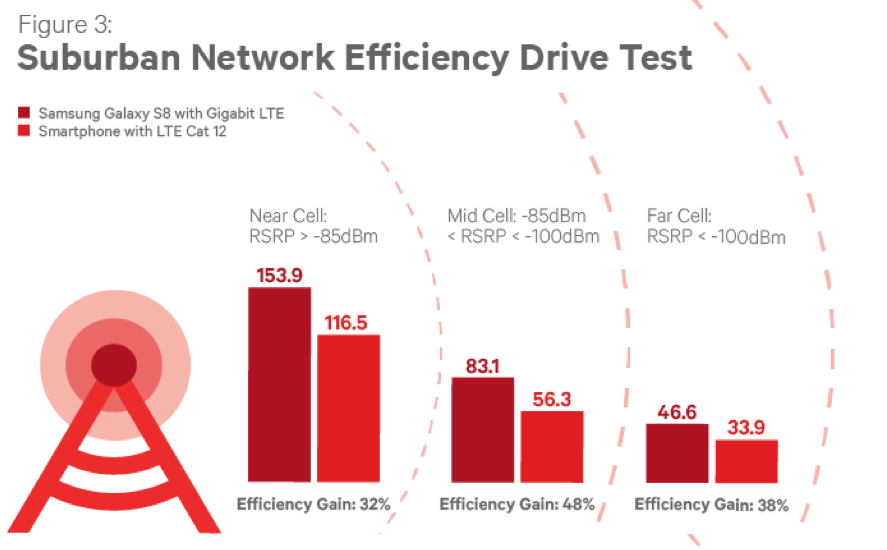
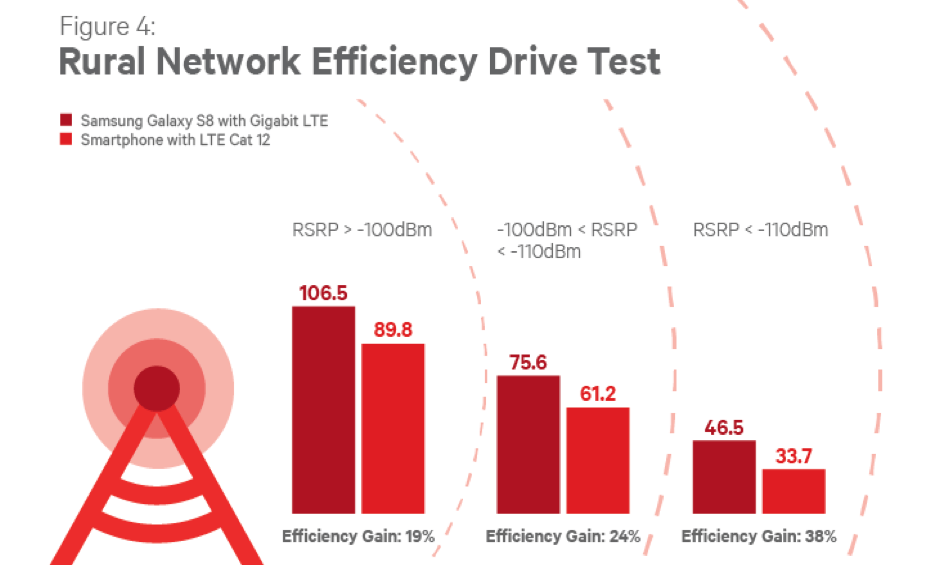
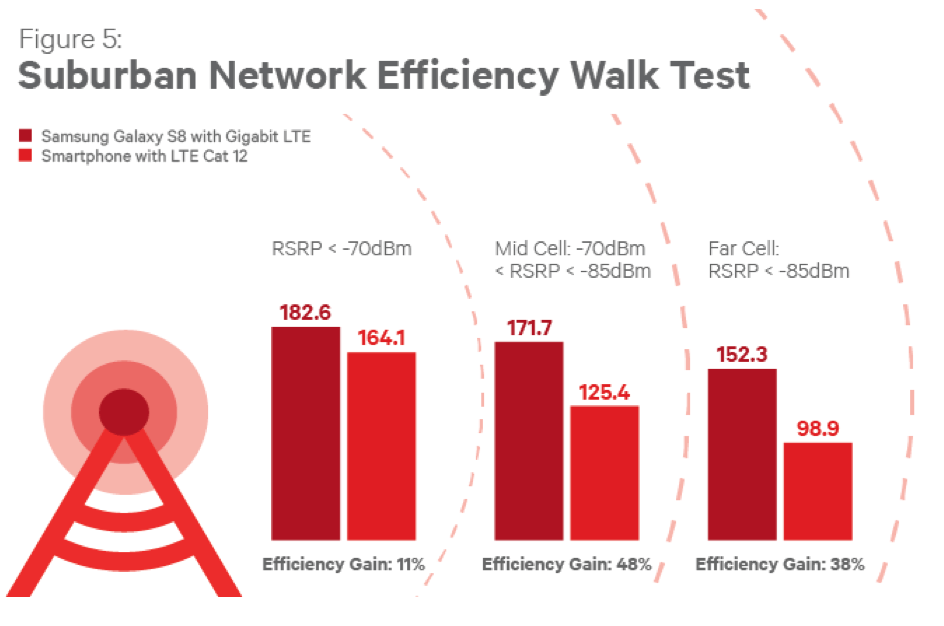
The test results obtained on a real network, is proving the advantages of the technology Gigabit LTE.
Gigabit LTE smartphones make the user experience better than smartphones 12 category:
- Faster loading
- A smaller number of network resources
- The efficiency of spectrum use is increased by 30-40 percent
- Improved network bandwidth and the possibility to serve other users
The more Gigabit LTE smartphones on the network, the better for all users of the network, no matter what their device
Gigabit-class LTE technology LAA provides the best user experience compared to devices that do not support LAA:
- Fast download
- Unloads the network and increases throughput
Gigabit LTE: the future of high-speed version of the Qualcomm
Hi-News.ru